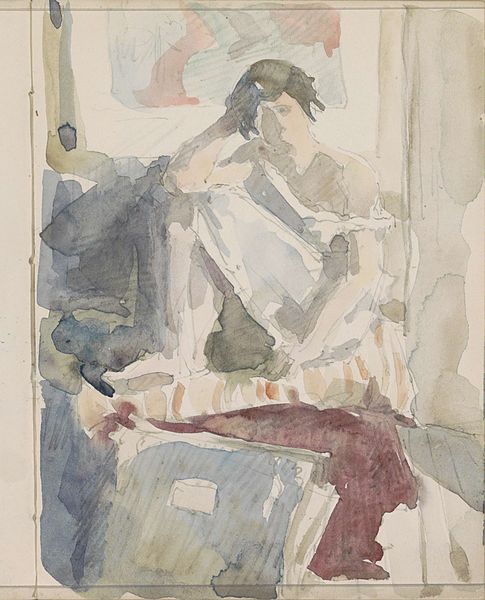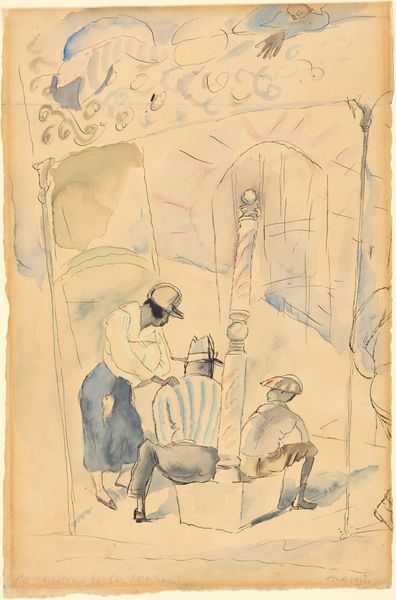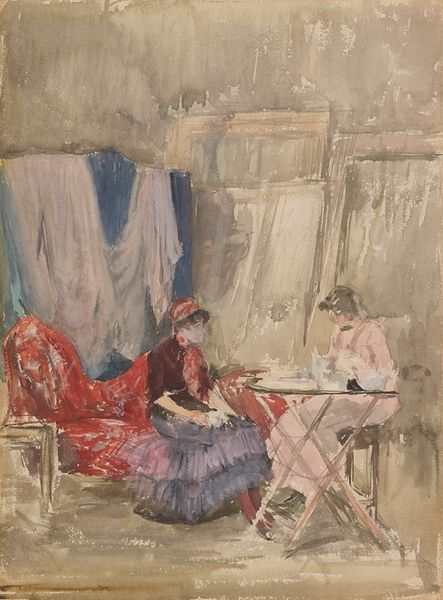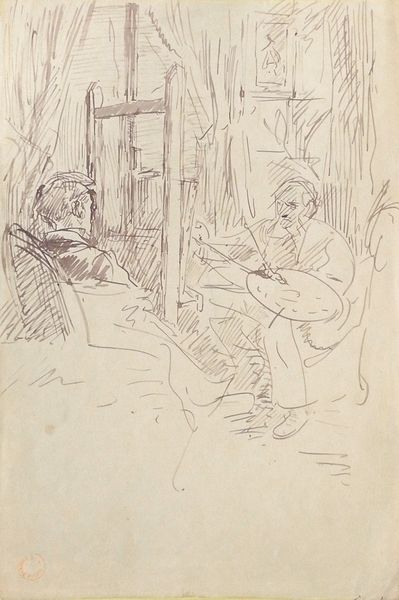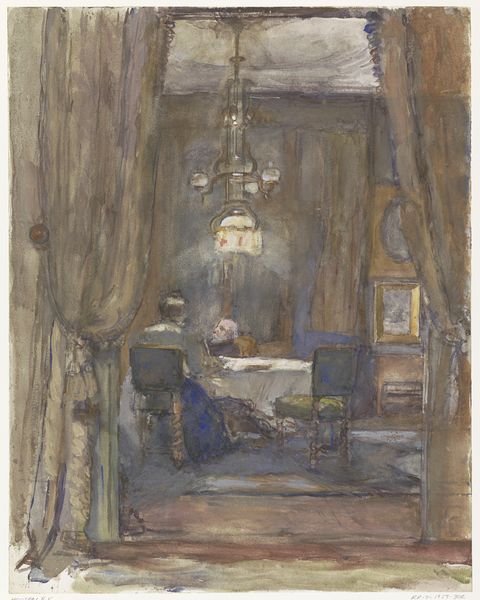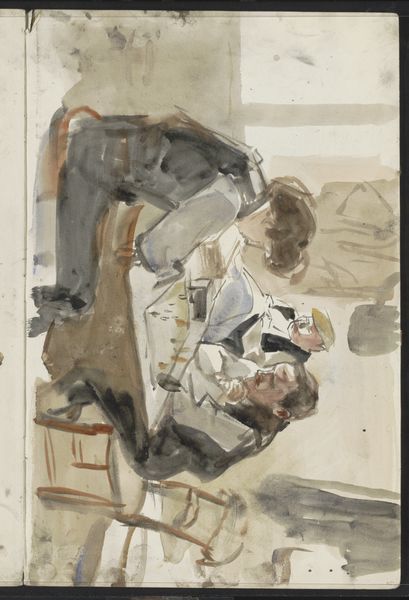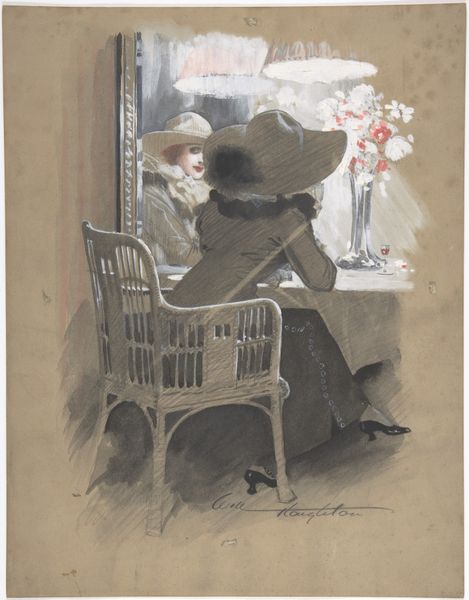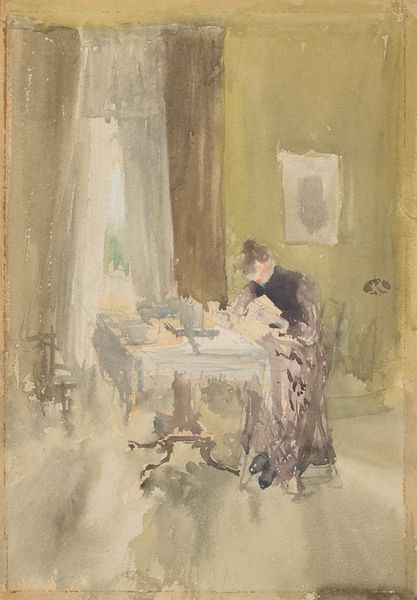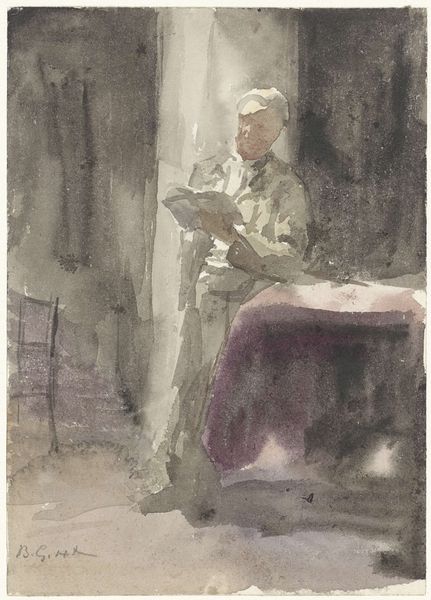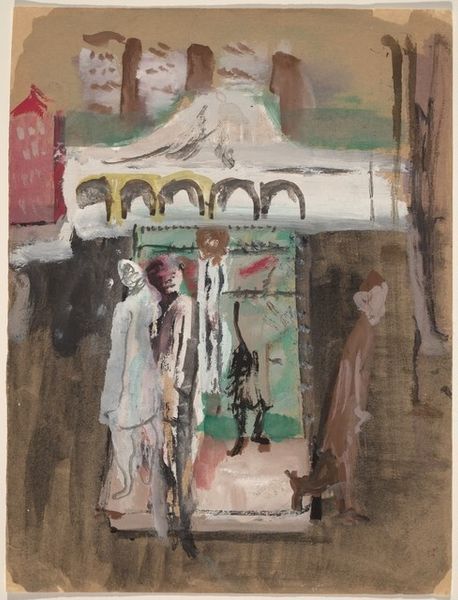
Dame en een jong meisje, beide lezend in de serre van het huis aan de Riouwstraat 6, te Den Haag 1872 - 1950
0:00
0:00
Dimensions: height 497 mm, width 423 mm
Copyright: Rijks Museum: Open Domain
Curator: Ah, look, it has the hazy dreaminess of watercolor, doesn't it? Editor: It does. I’m immediately struck by how the light pours in. It’s soft, muted—like it's remembering summer. Curator: That's fitting, I suppose. This watercolor on paper, believed to have been made sometime between 1872 and 1950, is titled "Dame en een jong meisje, beide lezend in de serre van het huis aan de Riouwstraat 6, te Den Haag"—or "Lady and a Young Girl, both Reading in the Conservatory of the House on Riouwstraat 6, The Hague." It comes to us from Barbara Elisabeth van Houten. Editor: It's a domestic interior; very intimate. Is that the artist herself? Perhaps her daughter? I wonder what they're reading. Do you know, I often feel I can intuit something about people by observing what books they’re drawn to. Curator: Possibly. Van Houten, who was part of a group of women artists breaking into a male-dominated art world, likely focused on portraying domestic life because that was her lived experience, the world permitted to her. Her home as the atelier, domesticity as a subject matter. It raises questions about opportunity and access, don't you think? How did societal norms limit women artist's choices? Editor: I suppose it does. Although, sometimes, restriction fosters intense focus. There's something rather revolutionary in just paying that much attention to these quiet moments. In celebrating those quiet moments! Van Houten's delicate, impressionistic brushstrokes almost dematerialize the room. The boundaries blur, and for a moment I sense all those invisible threads connecting mothers and daughters, readers and stories, artists and homes. Curator: The framing adds to that sense of interiority—the darker curtain drawn to one side, creating almost a stage for the figures. And it invites questions of class. The bourgeois comforts are quietly but undeniably displayed, signaling privilege and social standing. Editor: A visual whisper. I imagine myself curled up there. Maybe reading poetry, perhaps? Yes. This makes me want to call my mother, actually. Curator: It's curious how art made under restrictive conditions speaks still to a universal desire to connect, isn't it? Editor: Yes. Perhaps the greatest rebellion is showing tenderness where others demand austerity.
Comments
No comments
Be the first to comment and join the conversation on the ultimate creative platform.
